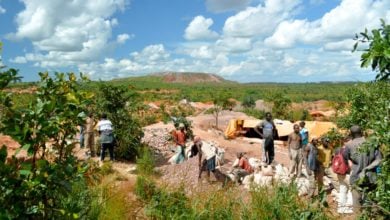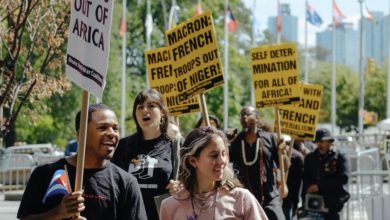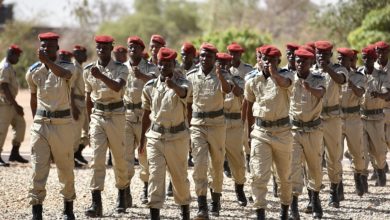October has seen significant escalation
in two of Africa’s most stubborn conflicts. A large-scale invasion
of Somalia by Kenya and further escalation by U.S. imperialism in
Uganda are poised to increase the level of violence and devastation
in both countries. Both instances are clear examples of how
cooperation between client regimes of rising capitalist powers and
Western imperialism are fueling militarism and war across the African
continent.
In mid-October several thousand Kenyan
troops poured across that nation’s border with Somalia in an
attempt to dislodge the Al-Shabab movement, which controls large
swaths of Somalia. The Kenyan government by its own admission planned
the operation months in advance, training and arming clan militias
inside of Somalia to assist their invasion forces.
Kenyan intervention is rooted in the
needs of Kenyan elites to secure profit. Al-Shabab’s menacing of
Kenyan tourist areas is a significant blow to one of the nation’s
largest, and growing, economic sectors. More importantly, Kenya’s
growing role as the central hub of regional trade is threatened by
Al-Shabab’s ability to attack ports and menace shipping lanes.
Just 60 miles from the Somali border,
for example, Kenya has a major new port project planned. Kenya hopes
to create a buffer zone in southern Somalia where Al-Shabab can not
threaten its ability to capture the greatest share of the growing
regional trade volume, as well as export its own goods.
While there was undoubtedly some
low-level coordination with both the United States and the African
Union Mission in Somalia (AMISOM), the Kenyan operation seems to
initially have been a one-state mission, drawing condemnation from
Somalia’s so-called “president.” On Oct. 31, however, Kenya and
Somalia’s Transitional Federal Government issued a joint appeal for
international aid. While their official demands are for a bolstering
of AMISOM forces, TFG officials also say they want help from NATO.
AMISOM, almost a totally East African
affair, is set to see small increases in support from other East
African nations, although it is unclear if Kenya’s intervention
will spur major new contributions of troops from any African country.
The TFG controls the capital and a small amount of other territory
only with the help of AMISOM, the United States, and the European
Union. Kenya’s invasion and the support of Kenyan-backed clans give
the TFG at least the illusion of controlling more territory.
With heavy rains soaking the terrain,
it is not clear whether Kenya will be able to achieve its objectives.
Al-Shabab and other resistance forces in Somalia have driven out both
U.S. and Ethiopian forces in the past two decades, making Kenyan
success seem far-fetched. Massive famine taking place in Somalia is
poised to get much worse as military operations disrupt relief
efforts—making the humanitarian toll of the war that much worse and
driving Somalia ever deeper into the abyss of violence and poverty.
From Kismayo to Kampala
Also in October, the U.S. government
announced it was sending 100 military advisors to Uganda to assist
troops from several central African nations in their fight against
the Lord’s Resistance Army. The LRA, led by Joseph Kony, is a
several-hundred-strong militia, made up mostly of children, that has
been on a two-decade-long rampage in northern Uganda and across the
region. Terrorizing any area they visit, the LRA rapes, kills and
steals with impunity. The LRA conflict has become a serious issue for
Uganda’s’s territorial integrity.
This is the latest in a long-string of
U.S. attempts to help African governments vanquish the LRA under a
humanitarian smokescreen. While the deadly ruthlessness of the LRA is
not in question, the strictly humanitarian motives for this latest
U.S. initiative are suspect, to say the least.
For example, while the LRA is heavily
targeted, equally brutal militias in the eastern Democratic Republic
of Congo with ties to U.S. ally Rwanda are left untouched.
Additionally, these coordinated military strategies have proved only
a failure in the past. These large-scale operations are akin to
stirring a hornet’s nest. While some LRA fighters are killed, small
groups escape into the dense jungle and go on killing sprees in
retaliation. The most recent large operation in 2008 ended with 1,000
people killed and 20,000 displaced.
The continued attempts to totally clear
out the LRA are connected to the Ugandan elite’s need to secure the
northern area of their country where large oil finds have been made.
U.S. officials claim that the U.S. troops will not see fighting but
simply improve intelligence gathering and coordination between the
countries involved. Whether fighting or not, the roles of these
troops will be critical. Still, it seems unlikely the result will be
any different from past U.S-assisted operations, sinking the war-torn
region further into despair.
Role of imperialism
These recent conflicts give insight
into U.S. imperialist strategy in Africa. As Africa’s rising
capitalist powers attempt to grow, they face significant challenges
from Islamic and other militants who threaten their control over
trade routes and resources. The U.S government, primarily through
AFRICOM, offers significant amounts of military aid and training to
assist these nations, and so far are up and running in 53 African
nations.
As new resource finds and growing
economies fuel increased capitalist growth, African elites are
becoming increasingly dependent on the United States, France and
other European countries in securing those resources. This increases
the leverage of the U.S. government with African governments and also
leads to increased militarization and war. This makes it imperative
that progressive and revolutionary people in the United States oppose
imperialist assistance to African comprador elites which is fueling
bloody conflicts and violating the right of self-determination.




